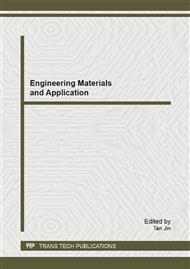p.937
p.943
p.949
p.955
p.961
p.967
p.976
p.981
p.986
Applying Back-Propagation Neural Network for Estimating the Slump of Concrete
Abstract:
This paper proposes the back-propagation neural network (BPN) and applies it to estimate the slump of high-performance concrete (HPC). It is known that HPC is a highly complex material whose behaviour is difficult to model, especially for slump. To estimate the slump, it is a nonlinear function of the content of all concrete ingredients, including cement, fly ash, blast furnace slag, water, superplasticizer, and coarse and fine aggregate. Therefore, slump estimation is set as a function of the content of these seven concrete ingredients and additional four important ratios. The results show that BPN obtains a more accurate mathematical equation through learning procedures which outperforms the traditional multiple linear regression analysis (RA), with lower estimating errors for predicting the HPC slump.
Info:
Periodical:
Pages:
986-989
Citation:
Online since:
January 2013
Authors:
Price:
Сopyright:
© 2013 Trans Tech Publications Ltd. All Rights Reserved
Share:
Citation:


